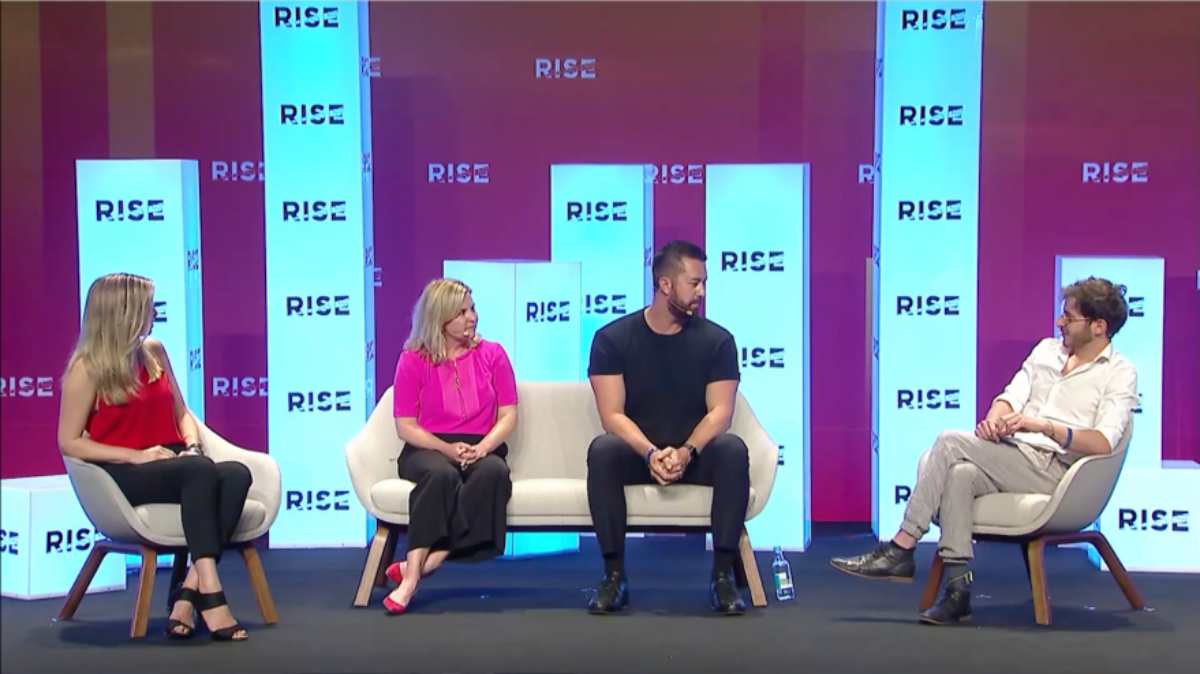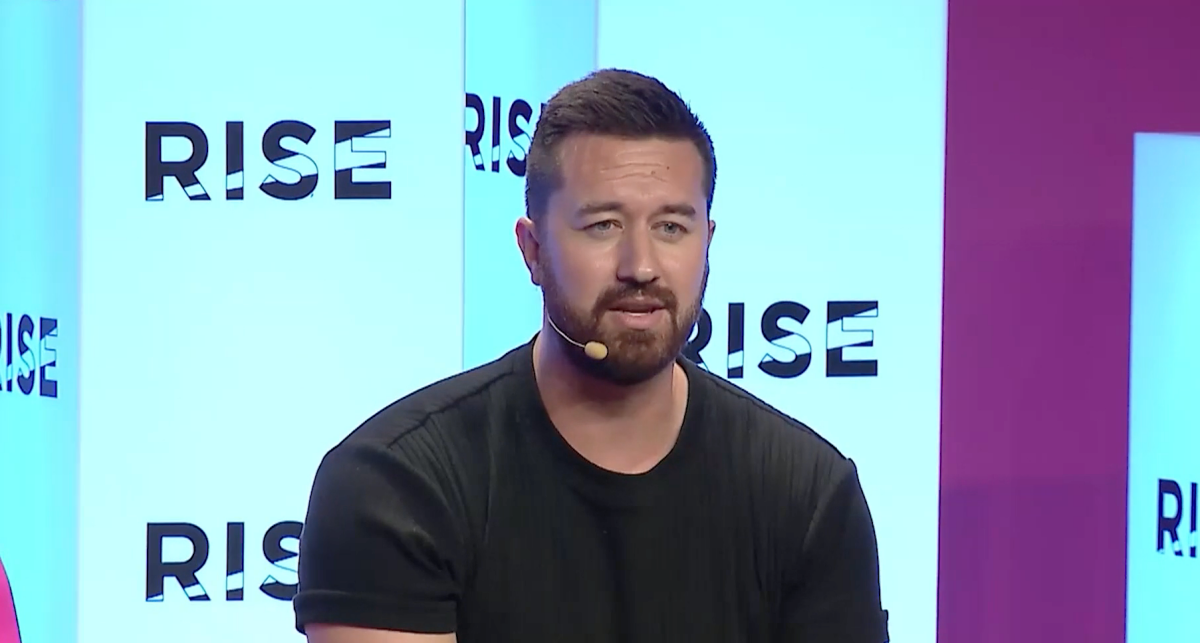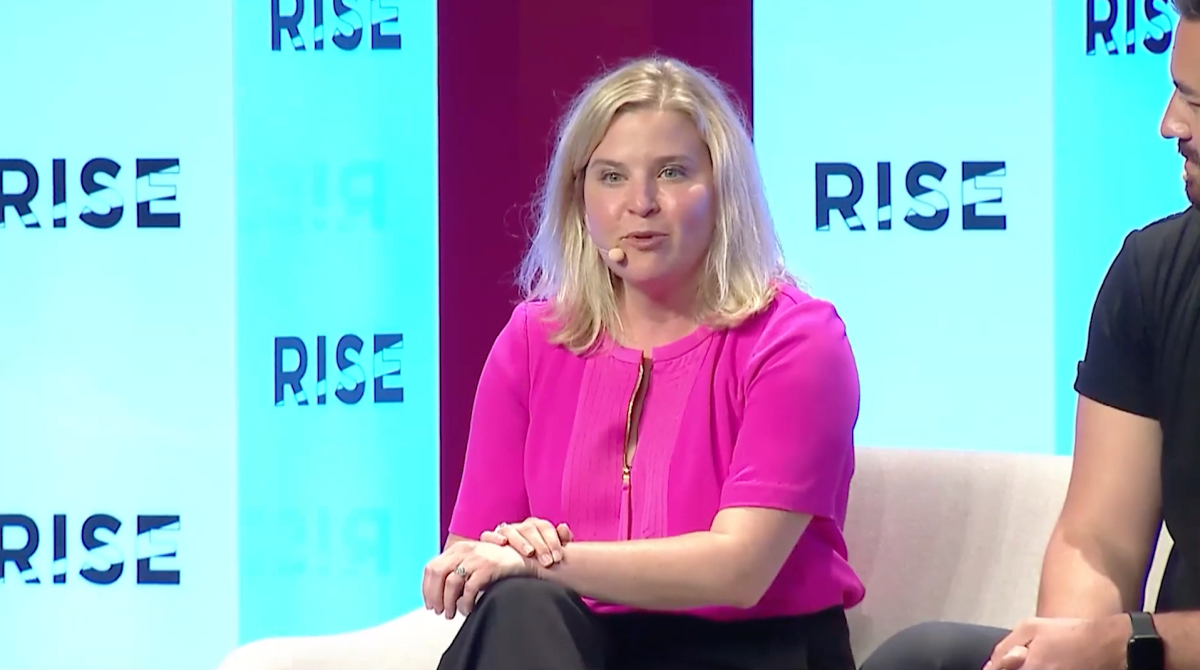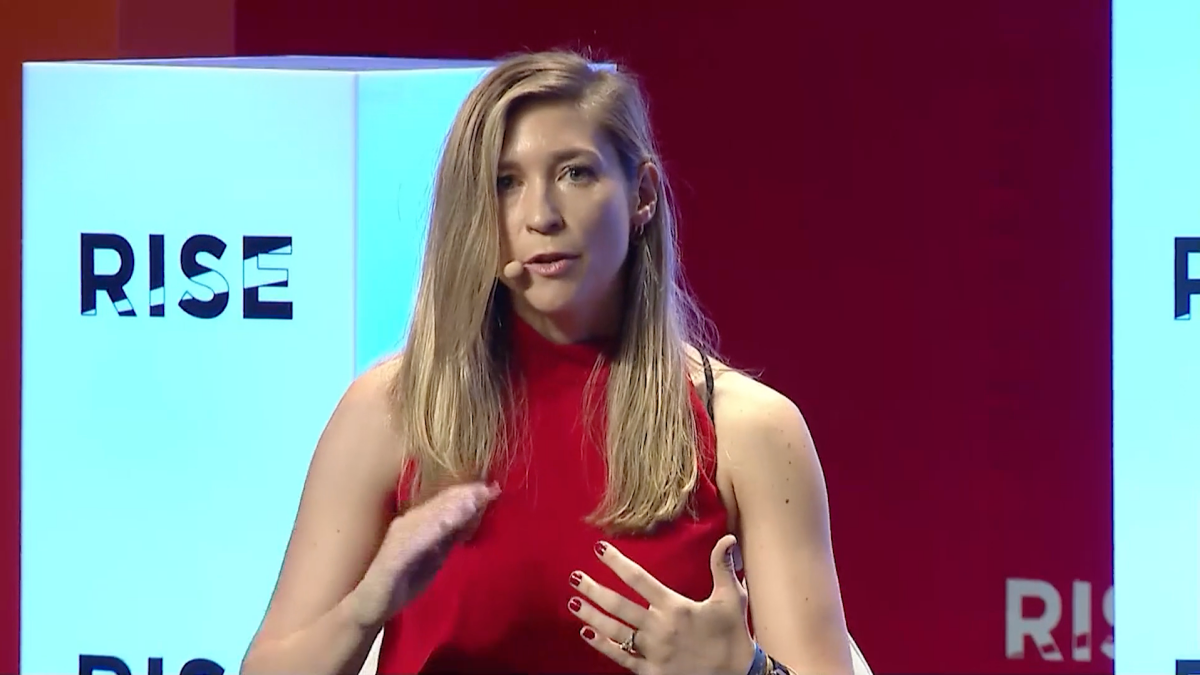Delight by design: The art behind winning customer experience

Ever wonder what lies behind the mind of every successful creative invention? At RISE Conference in Hong Kong, three thought leaders in creativity, design, and digital who shared the art behind the best customer experiences and about their perspective on design thinking. Cynthia Johnson, CEO & Author, Entrepreneur Magazine/ Bell & Ivy, Amy Buckner Chowdhry, Founder & CEO, AnswerLab and Greg Lutze, Founder, VSCO.
Definition of ‘great design’
 Greg: In VSCO we describe good designs as hospitable. When we say hospitable, we want to create an experience that’s welcoming, that’s consistence, that helps people, so we actually think a lot on the hotel industry. How you can go into a hotel and you can have different aesthetics, some very minimal, some very fancy and nice. But what makes it a very great experience is when it is made personalized to you, when you feel like “someone’s got your back” where they will help you along the way. That’s our definition of good design.
Greg: In VSCO we describe good designs as hospitable. When we say hospitable, we want to create an experience that’s welcoming, that’s consistence, that helps people, so we actually think a lot on the hotel industry. How you can go into a hotel and you can have different aesthetics, some very minimal, some very fancy and nice. But what makes it a very great experience is when it is made personalized to you, when you feel like “someone’s got your back” where they will help you along the way. That’s our definition of good design.
Amy: We think about great design and first and foremost, being highly intuitive and usable. So, people should not be confused coming to engage with digital experience.
The second thing we think about is that a great design needs to create an experience that is seamless across all platforms.
We also think about your brand, how does your brand got conveyed across the digital touch points, for example the call center, if the brand experience consistently telling the same story.
The fourth component that we have been focusing on more is that, in the last couple of years we have been asking “Is the experience inclusive?”. Are different abled people and groups that are traditionally marginalized who are also within your target audience? Are they also included to make you feel welcome and included in your experience or are they excluded? This is something we have been helping companies to tackle because they haven’t been focusing a lot on this in the past.
Cynthia: I agree, intuitive is absolutely key to user experience. In addition, feeling safe. We want to be able to understand the next question that the customer is going to ask. You want them to feel safe knowing that you knew that, and you also want to make sure that from for example the call centers message and tone is the same across the board, and making sure that along the way you don’t become annoying is also key in building a really nice customer experience.
How can companies implement human centred designs in their work?
 Amy: Human centered designs basically means as you go through the design process for an experience you include research with your user along the way, rather than the team deciding what they think should be the right design, or the design being let by engineering construes. Instead the design is focusing exclusively on solving a customer’s pain and understanding that pain and illustrative on the ways which you might solve it until you get the best possible product that work.
Amy: Human centered designs basically means as you go through the design process for an experience you include research with your user along the way, rather than the team deciding what they think should be the right design, or the design being let by engineering construes. Instead the design is focusing exclusively on solving a customer’s pain and understanding that pain and illustrative on the ways which you might solve it until you get the best possible product that work.
Start with foundational research, where you go into the home and offices of your users and really truly understanding, and then building empathy understanding on the situations and uncovering where the pain is that you might solve. Then you might have a few ideas that might solve that, and you will want to test it on users as well. When you go into the design process, using an illustrative process where you might be testing design every Thursday or once a month, so it builds into your DNA of your company and nothing goes out the door. At the end, you will want to measure the experience overtime.
Greg: Actually initially we did operate with ideas like “Hey, we’re designing and creating stuff that we want, if I want it, let’s make it” That went for a while, but the reality is that the majority of our users of VSCO is under the age of 24, so we have to set out exactly the same pattern what Amy just laid out.
We started by talking a lot, building a relationship, asking questions. The idea focuses on building relationships, have empathy and understand the motivations that are driven by the community of people are using the products. They will ask the community to propel them and not bring them down. And for us, as a result of that, we are not going to emphasizing likes, comments and a lot of the social pressure that you see on other platforms. We know that because that’s where a lot of the consumer’s motivations wants.
We made a lot of mistakes. Looking back 8 years ago where we first started, our gut was good on a lot of things, but if we were to start off the process of research, user testing, all of it so much sooner, it will be a lot better.
Ultimately, we’re successful if we help everyone form up with their creativity. We have to understand who everybody is, not just ourselves.
How do you apply that human conversation to Brand Building?
 Cynthia: Everything. Every element of your brand has to take into consideration of your audience that you’re trying to attract. A brand is built to make you feel something before you’re selling anything. If you are trying to build a personal or corporate brand identity, then everything you say and every response is crucial. Not just to someone reaching out to you, but also about what’s happening around the world and how your personal brand feels about it. Having no opinions is really not an option anymore. If you don’t understand your brand at its core, and really listen to what your consumer and community is telling you, you don’t know how to respond to that and get backlashes.
Cynthia: Everything. Every element of your brand has to take into consideration of your audience that you’re trying to attract. A brand is built to make you feel something before you’re selling anything. If you are trying to build a personal or corporate brand identity, then everything you say and every response is crucial. Not just to someone reaching out to you, but also about what’s happening around the world and how your personal brand feels about it. Having no opinions is really not an option anymore. If you don’t understand your brand at its core, and really listen to what your consumer and community is telling you, you don’t know how to respond to that and get backlashes.
How do you measure the word of success of a brand?
Cynthia: It’s about going in everything with intent. What am I trying to achieve by doing this? If we don’t go into every single move whether it’s hiring a social media person or posting something on twitter. If you don’t understand what you’re trying to achieve, you can’t measure it at all. Everyone has a personal brand, everyone is online, and there are so many companies coming up every day. It’s not about reaching everyone necessarily, especially at the beginning. It’s about understanding who you’re trying to reach and then measuring that. Because the million people that don’t care about you or your brand is worthless. But the 5 people really love it, is something. Understanding what success looks like at each stage is how you can value and measure.
Design thinking: Do we look at only the statistics? How do we know a UX change is a good change?
Amy: What I found that many companies do when they first get started doing this type of research is they look at some analytics that they have and believe that those analytics will be enough to tell a story of their customer experience, or send a survey out so they know the customer’s satisfaction level is. But to truly understand the customer experience that your users are using, you have to physically watch them using the products. It opens up an entirely new world on the inside, especially if you use them at the talk-a-loud metrology where they explain to you why they are clicking on this particular link for the task that you’ve given them. We believe really strongly in qualitative research; it rounds up the picture between all of the data and helps create a story from the numbers that you see.
The first thing you should do as a startup is hiring a user-experience researcher in your company. Very strong advocate for having a user-experience as your strategic imperative in your organization.
Greg: In VSCO, we have a research team. But we actually encourage, somewhat forced, people that are not on the research team to engage this as well. Whether you’re an engineer, finance. It helps to build empathy for these people and what their needs are, is not just about the matter of number. But when the whole company buys into the idea of research and understanding who we’re building for, it really changes the energy we’ve seen internally.
How do you do user-research in VSCO?
Greg: We just have to know who we are building for, that’s the top. You can get down to the UR/UX optimization, but you have to start understanding from the very high level. But then once we do start product features, we can test A,B,Cs different version. Grab some people, user-testing and get some ideas. Once we get the signal that it’s good, we can start shipping into 1%,5%,10% of our community.
How many people are considered enough for user-testing?
Amy: Depends on your research question. Will people adapt to this thing or how will people feel about our brand, or something involves a lot on perception type of question, you need lots of people from 100s, 200s, to thousands generally within each of your target segments. But if we are talking about watching people using our products and undercover if this is intuitive and easy to use, finding the next button, etc, you just need 6 within that target that you’re doing.
Is there some sort of brand work that companies can do internally before they go out to seek agencies?
Cynthia: The first thing is identifying who the key stakeholders are. It’s not just who’s using your product, but also the people that building it, that invested on it, your families. Once you identify that and breaking that up geographically as well.
When is the time to go from personal to public? When’s the time to turn brand that you built because you like that brand into a brand that speaks to the audience that you’ve created?
I would say when the audience is speaking back. Because no one likes to be spoken at, they want to be spoken to. When you throw this new thing with no real context, it feels like you’re being yelled at or advertised to, even if that’s not the case.
When you start to have companies or individuals reaching out to you, that’s when you realize you actually engaged them. That’s when you start thinking about it. When you start pushing forward more aggressively, is when you have a real grasp on a certain market segment. Think strategically where and when is a fit based on the feedback you’re getting from your customers.
One sentence of advice from each of you on how to improve the designs for companies.
Greg: Hired creative, and pathetic maybe even weird people as part of your company. It’s important that you bring diversity creativity as well as different perspectives. It will create a much better work environment and you will be able to meet the needs of your consumer better.
Amy: Number 1 thing that any startups need to be thinking about is what kind of culture are we building? Are we building a culture that is customer obsessed and looks to make decisions based on insights from our users, or are we not? Are we including people and doing the right thing or are we cutting corners and producing work just to drive revenue?
Cynthia: Don’t design for yourself, don’t design for your competitors. Design for your audience, and the people that you’re trying to impact with your product. Reach out and ask for help, ask those weird people that you hired, ask their friends, ask people on your team. it’s really important to know that there’s more outside of whatever 4 walls that you’re in at that time.
ลงทะเบียนเข้าสู่ระบบ เพื่ออ่านบทความฟรีไม่จำกัด






